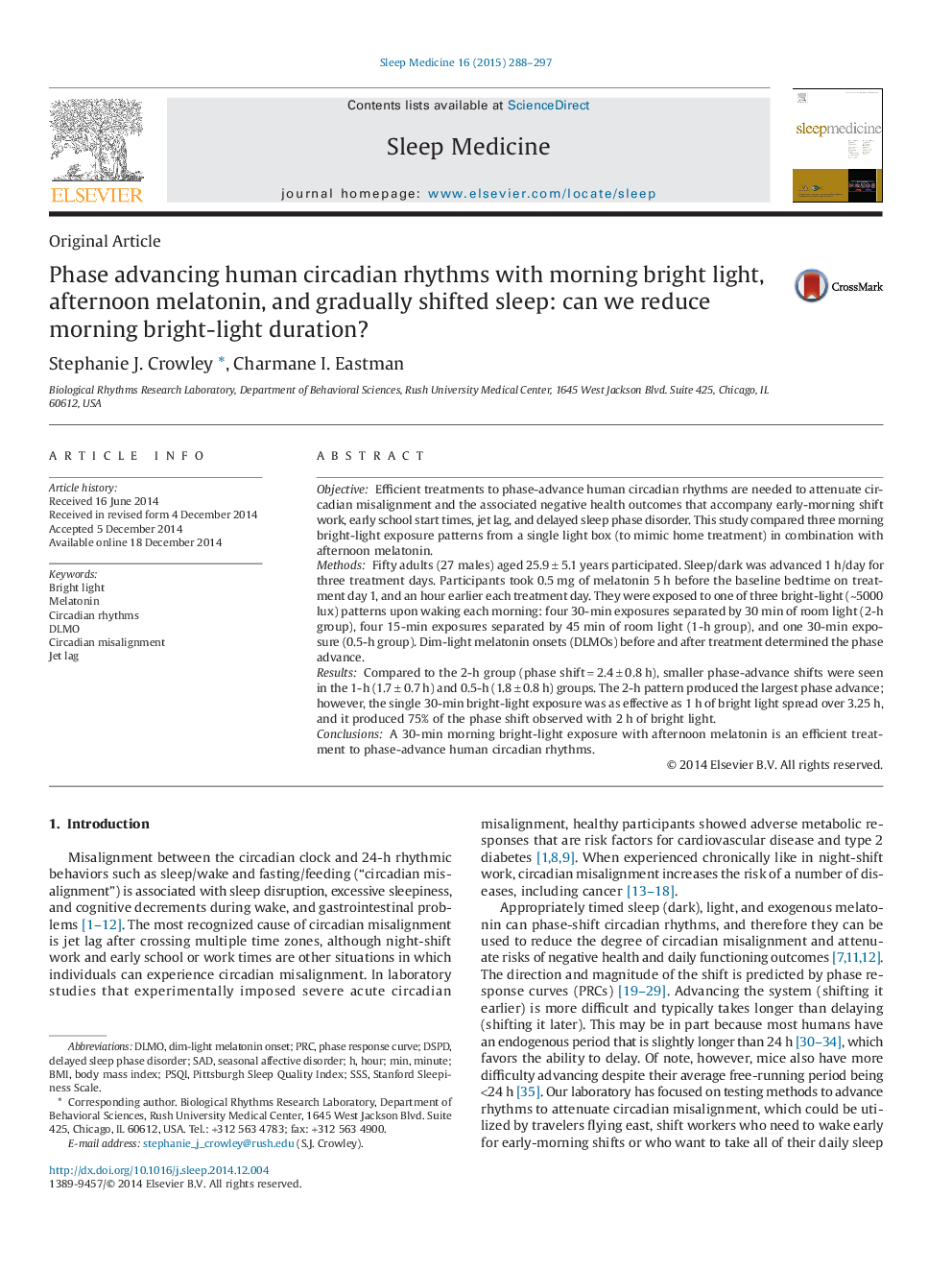| Article ID | Journal | Published Year | Pages | File Type |
|---|---|---|---|---|
| 6060474 | Sleep Medicine | 2015 | 10 Pages |
â¢Morning bright light, afternoon melatonin, and early sleep advance circadian rhythms.â¢With advancing sleep and melatonin, three morning bright-light patterns are compared.â¢A 2-h light exposure spread over 3.5âh produces the largest advance shift.â¢A single 0.5-h light exposure is as effective as a 1-h exposure spread over 3.25âh.â¢A single 0.5-h light exposure produces 75% of the advance produced by a 2-h pattern.
ObjectiveEfficient treatments to phase-advance human circadian rhythms are needed to attenuate circadian misalignment and the associated negative health outcomes that accompany early-morning shift work, early school start times, jet lag, and delayed sleep phase disorder. This study compared three morning bright-light exposure patterns from a single light box (to mimic home treatment) in combination with afternoon melatonin.MethodsFifty adults (27 males) aged 25.9â±â5.1 years participated. Sleep/dark was advanced 1âh/day for three treatment days. Participants took 0.5âmg of melatonin 5âh before the baseline bedtime on treatment day 1, and an hour earlier each treatment day. They were exposed to one of three bright-light (~5000 lux) patterns upon waking each morning: four 30-min exposures separated by 30âmin of room light (2-h group), four 15-min exposures separated by 45âmin of room light (1-h group), and one 30-min exposure (0.5-h group). Dim-light melatonin onsets (DLMOs) before and after treatment determined the phase advance.ResultsCompared to the 2-h group (phase shiftâ=â2.4â±â0.8âh), smaller phase-advance shifts were seen in the 1-h (1.7â±â0.7âh) and 0.5-h (1.8â±â0.8âh) groups. The 2-h pattern produced the largest phase advance; however, the single 30-min bright-light exposure was as effective as 1âh of bright light spread over 3.25âh, and it produced 75% of the phase shift observed with 2âh of bright light.ConclusionsA 30-min morning bright-light exposure with afternoon melatonin is an efficient treatment to phase-advance human circadian rhythms.
